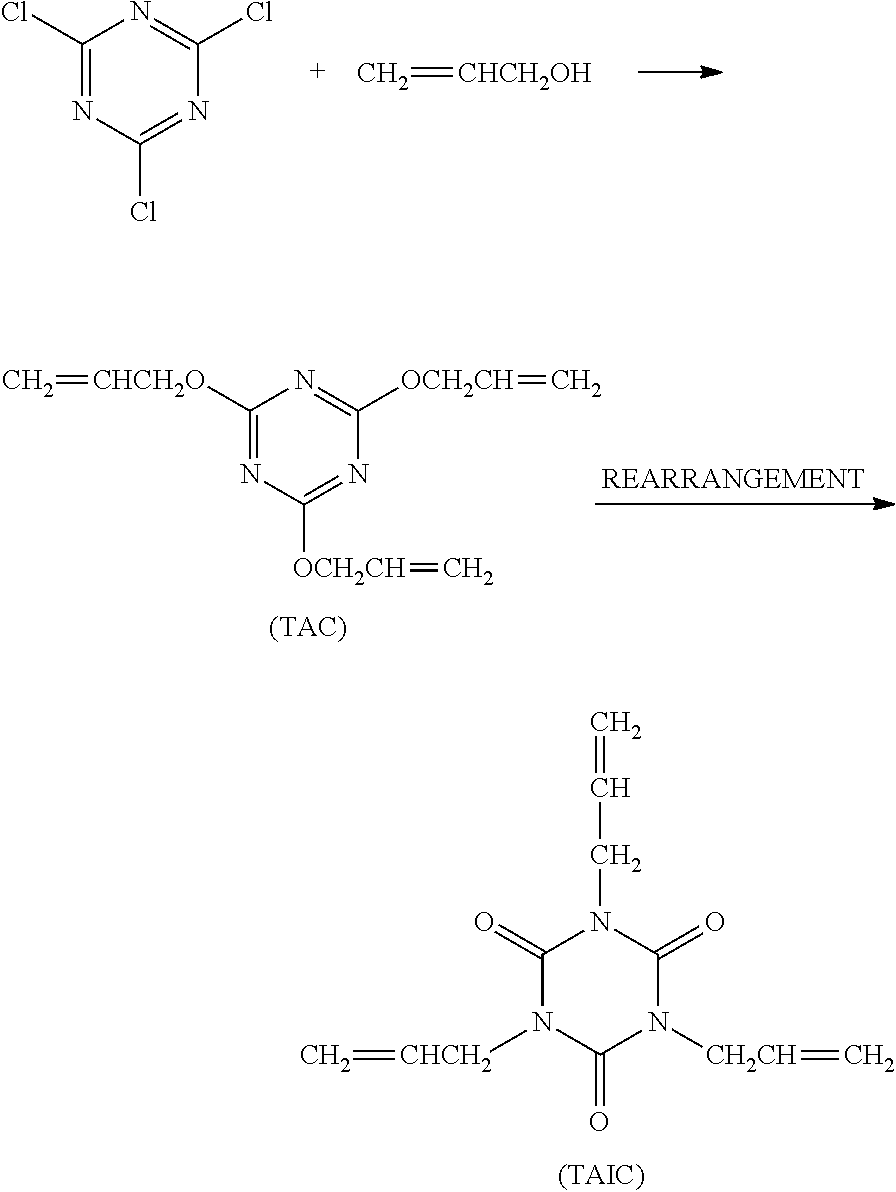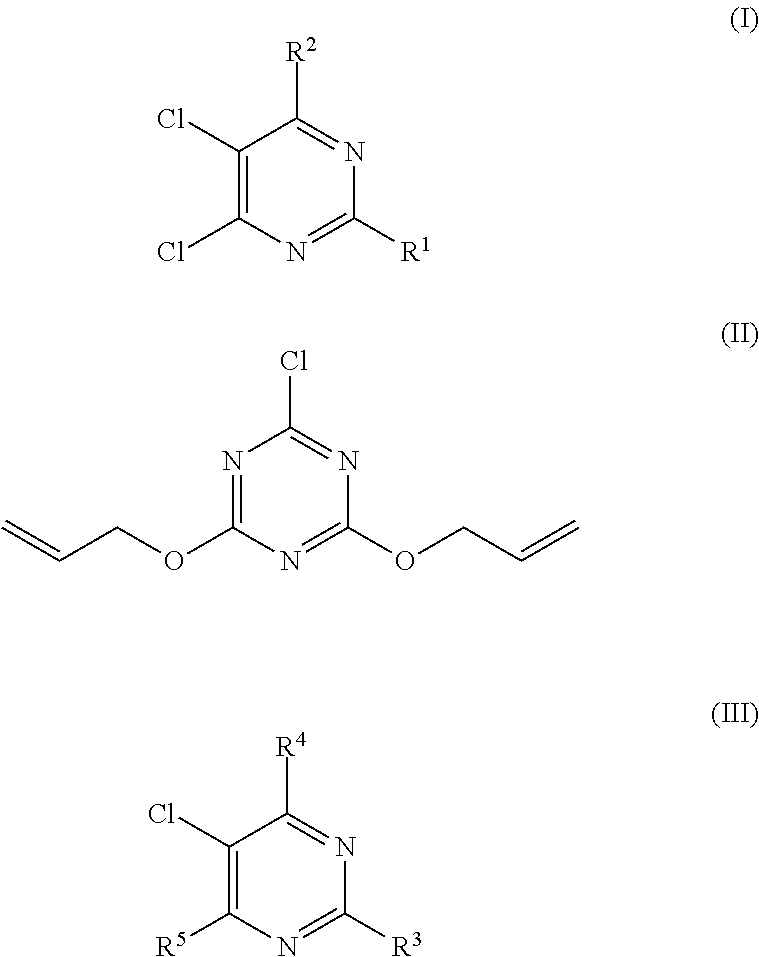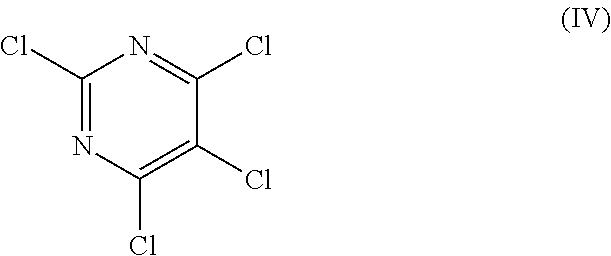Method of storing triallyl isocyanurate
a technology of isocyanurate and triallyl isocyanurate, which is applied in the field of storage of triallyl isocyanurate, can solve the problems of deteriorating handling properties and a considerable long time to reach, and achieve the effect of good handling properties and not increasing the viscosity of the produ
- Summary
- Abstract
- Description
- Claims
- Application Information
AI Technical Summary
Benefits of technology
Problems solved by technology
Method used
Image
Examples
production example 1
[0050]The oily material produced in the same manner as defined in Comparative Production Example 1 was subjected to heating and stirring treatment in a 5% by weight NaOH aqueous solution at 50° C. for 2 hr. Next, the obtained reaction solution was neutralized with hydrochloric acid, and an organic layer was separated therefrom and then subjected to distillative purification to obtain crystals of TAC (yield: 84%). It was confirmed that neither the mixture (A) of the organic chloride compounds nor the organic chloride compound of the chemical formula (II) were detected in the thus obtained TAC (less than 10 ppm).
[0051]Next, the above TAC was subjected to the same procedure subsequent to the rearrangement reaction as defined in Comparative Production Example 1, thereby obtaining TAIC (yield: 90%). It was also confirmed that neither the mixture (A) of the organic chloride compounds nor the organic chloride compound of the chemical formula (II) were detected in the thus obtained TAIC (le...
production example 2
[0052]The oily material produced in the same manner as defined in Comparative Production Example 1 was subjected to heating and stirring treatment in a 1% by weight NaOH aqueous solution at 50° C. for 6 hr. Next, the obtained reaction solution was neutralized with hydrochloric acid, and an organic layer was separated therefrom and then subjected to distillative purification to obtain crystals of TAC (yield: 84%). It was confirmed that the thus obtained TAC comprised 40 ppm of the mixture (A) of the organic chloride compounds and 10 ppm of the organic chloride compound of the chemical formula (II).
[0053]Next, the above TAC was subjected to the same procedure subsequent to the rearrangement reaction as defined in Comparative Production Example 1, thereby obtaining TAIC (yield: 90%). It was confirmed that the thus obtained TAIC comprised 10 ppm of the mixture (A) of the organic chloride compounds, but no organic chloride compound of the chemical formula (II) was detected therein (less ...
production example 3
[0055]The same procedure as defined in Comparative Production Example 2 was conducted except that in Comparative Production Example 2, allyl chloride comprising 1,3-dichloropropene (comprising 0.1 ppm of a cis isomer and 0.1 ppm of a trans isomer) was used as the raw material, thereby producing TAIC (yield: 91%). As a result, it was confirmed that no organic chloride compound represented by the general formula (V) was detected in the thus obtained TAIC (less than 10 ppm).
PUM
| Property | Measurement | Unit |
|---|---|---|
| melting point | aaaaa | aaaaa |
| temperature | aaaaa | aaaaa |
| temperature | aaaaa | aaaaa |
Abstract
Description
Claims
Application Information
 Login to View More
Login to View More - R&D
- Intellectual Property
- Life Sciences
- Materials
- Tech Scout
- Unparalleled Data Quality
- Higher Quality Content
- 60% Fewer Hallucinations
Browse by: Latest US Patents, China's latest patents, Technical Efficacy Thesaurus, Application Domain, Technology Topic, Popular Technical Reports.
© 2025 PatSnap. All rights reserved.Legal|Privacy policy|Modern Slavery Act Transparency Statement|Sitemap|About US| Contact US: help@patsnap.com



